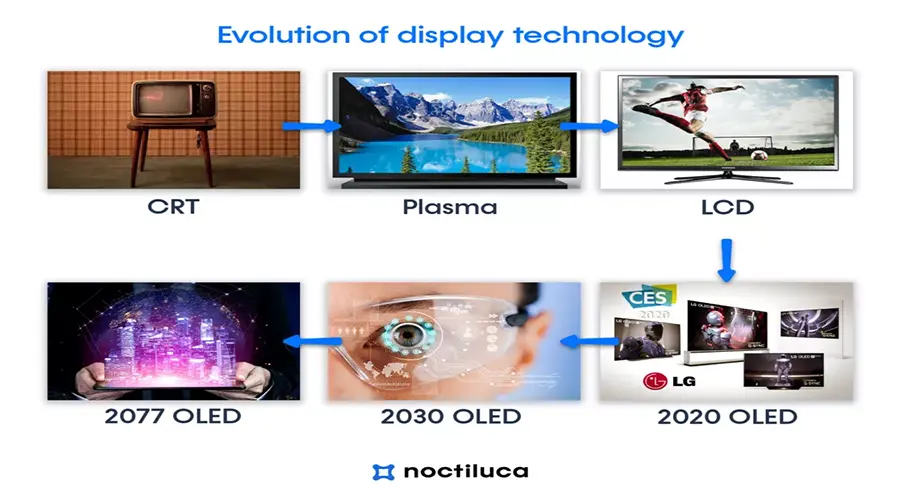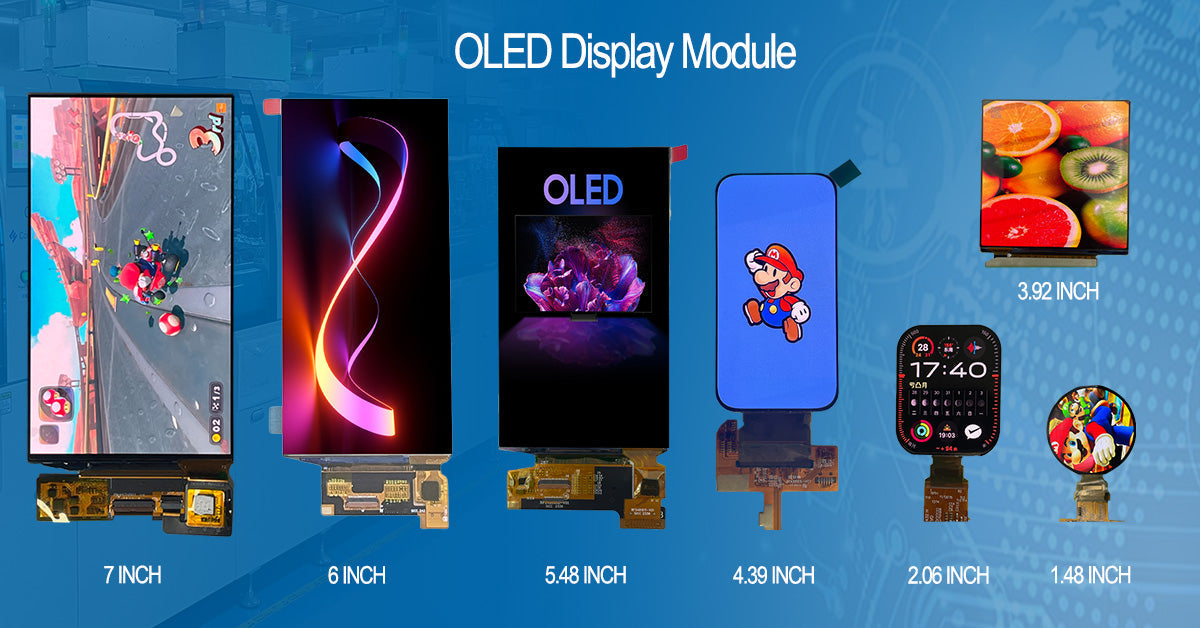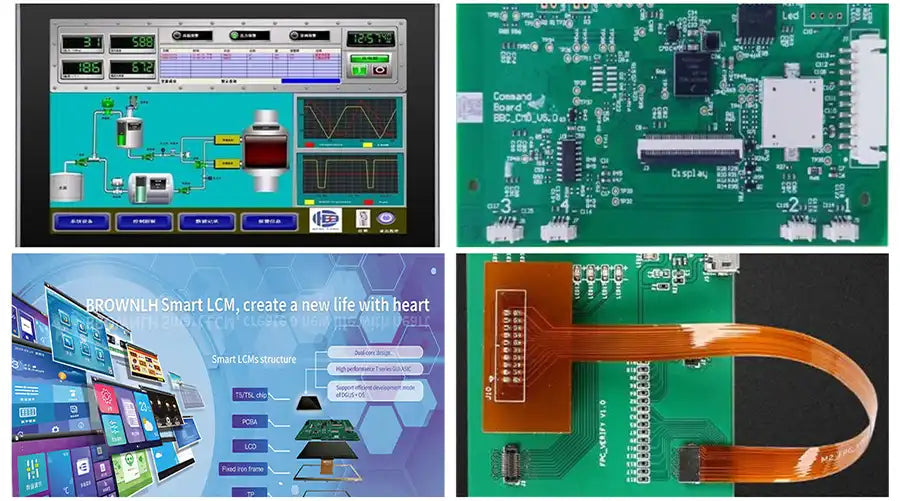Wearables (Smartwatch/Band)
Ultra-thin and low power with Always-On Display options. Good outdoor readability and rich UI animations. Recommended sizes 0.49"–1.91", typical interfaces SPI/I2C, optional touch and cover glass.
Filters
23 products
Contact Us
At Shenzhen Brownopto Technology Co., LTD, we are committed to sustainable practices that minimize environmental impact while delivering cutting-edge display technology.
RoHS Compliance: Our OLED displays comply with the Restriction of Hazardous Substances Directive (RoHS), ensuring they are free from harmful substances like lead, mercury, and cadmium.
Energy Efficiency: Our OLED panels consume less power when displaying dark content, significantly reducing energy consumption and extending battery life in portable devices.
Recycling Programs: We participate in recycling programs to responsibly dispose of and recycle OLED displays, minimizing electronic waste.
Community Engagement: We actively engage with local communities through educational initiatives and support for STEM programs, fostering the next generation of innovators.
Sustainability Goals: Our long-term sustainability goals include reducing our carbon footprint by optimizing manufacturing processes and promoting green technology adoption across our supply chain.
We are continuously investing in research and development to push the boundaries of OLED technology and create innovative solutions for tomorrow’s challenges.
Next-Generation OLED Technologies: We are exploring new materials and manufacturing techniques such as QD-OLED (Quantum Dot OLED) and MicroLED to enhance performance and reduce costs.
Partnerships and Collaborations: Collaborating with leading universities, research institutions, and industry partners to accelerate innovation and bring groundbreaking technologies to market faster.
Emerging Markets: Identifying and entering new markets with cutting-edge products, including AR/VR, foldable displays, and automotive infotainment systems.
Long-Term Goals: Our vision includes making OLED technology more accessible and affordable, driving widespread adoption across various industries.
Potential Breakthroughs: Anticipated innovations such as self-repairing displays and ultra-thin, flexible screens could revolutionize how we interact with digital interfaces.
Contributions to the Field: By contributing to academic research and publishing our findings, we aim to advance the field of OLED technology and inspire future innovations.
Contact us for samples, datasheets, or custom design support.
Request a QuoteOLED DISPLAY
Tailor your display to fit your product perfectly. We offer comprehensive customization across size, resolution, interface, and durability.
We support flexible OLED designs in a wide range of dimensions and form factors to meet your device's unique space and aesthetic requirements.
Size Range: From 1.0" to 8.0", including circular, square, rectangular, and irregular shapes.
Flexible & Curved Designs: Bendable and foldable OLEDs for wearable, automotive, and medical devices.
Custom Cutouts: Integrated cutouts for cameras, sensors, or buttons without compromising display integrity.
Optimize visual clarity and power efficiency with resolution and pixel layout tailored to your application’s needs.
Resolution Options: From 96×96 to 1920×1200 (WUXGA), supporting FHD and beyond.
Pixel Layout: Custom RGB or PenTile arrangements for improved brightness and longevity.
Power-Optimized Modes: Lower resolution or grayscale modes for battery-sensitive applications like wearables.
Seamlessly integrate our OLED modules with your existing hardware and firmware using flexible interface options.
Supported Interfaces: MIPI DSI, SPI, I²C, LVDS, QSPI, and custom protocols.
Driver IC Customization: Tailored driver ICs for optimized performance, timing, and compatibility.
Firmware Support: SDKs and reference code available for rapid development and debugging.
Improve readability and reliability in challenging environments with advanced optical and mechanical upgrades.
Anti-Reflective (AR) Coating: Reduces glare and improves visibility in bright sunlight.
Optical Bonding: Laminated glass or film for enhanced touch sensitivity and shock resistance.
Environmental Protection: IP67 sealing, UV-resistant layers, and operating temperature range from -30°C to +85°C.
Need a custom OLED solution? We’re here to help.
Request Custom Design SupportBROWNOPTO OLED/AMOLED display modules are widely used across wearables, industrial HMI, medical handhelds, automotive interiors, and smart home/instrumentation. Below are common scenarios and how to choose the right module quickly.
Ultra-thin and low power with Always-On Display options. Good outdoor readability and rich UI animations. Recommended sizes 0.49"–1.91", typical interfaces SPI/I2C, optional touch and cover glass.
Long-life, wide-temperature operation for 24/7 environments. Easy integration with SPI/I2C and robust EMC behavior. Anti-reflection options improve readability in harsh lighting.
High contrast and accurate color for critical readouts. Optional low blue light and bi-directional interfaces. Supports calibration and stable white-point across brightness levels.
High brightness, wide color gamut, and -30~85°C capability. Suitable for dials, knobs, and auxiliary displays. Supports custom shapes and higher vibration resistance.
Low-power always-on indicators, wide viewing angles, and fast response. Ideal for thermostats, locks, gateways, and meters. SPI 4/8-wire and I2C options, with easy firmware bring-up.
Compact modules for cameras, audio players, and handheld consoles. Smooth motion and vivid colors with minimal latency. Custom FPC and cover glass with AR/AF coatings are available.
AMOLED stands for Active-Matrix Organic Light-Emitting Diode. It uses an active matrix of thin-film transistors (TFTs) to control individual pixels, offering faster response times and better power efficiency compared to passive matrix OLEDs.
Low-Temperature Polysilicon (LTPS) technology enables higher electron mobility, allowing for smaller, more efficient TFTs. This results in higher resolution and improved image quality.
OLED pixels can switch on and off almost instantaneously because they don't rely on backlighting or liquid crystals. Typical response times are less than 1 ms.
Yes, OLED displays can be used outdoors. They offer high brightness levels (up to 1000 cd/m²), making them visible even in direct sunlight.
The wide color gamut of OLED displays allows them to reproduce a broader range of colors, providing more vivid and lifelike images. Many OLED displays support over 100% of the NTSC color space.
OLED displays are highly durable and can withstand mechanical shocks and vibrations. They are designed to operate within a wide temperature range (-30°C to +85°C).
Avoid dropping or applying excessive pressure to the screen. Clean the surface gently with a soft, dry cloth and avoid harsh solvents except ethyl alcohol.
Our OLED displays comply with international standards such as RoHS 2.0, CE, and FCC, ensuring they meet safety and environmental regulations.
We use advanced calibration techniques during manufacturing to ensure uniform color reproduction. Regular testing and fine-tuning help maintain consistency.

OLED Display Outlook 2025–2026: Trends, Challenges & Opportunities
As we approach the end of 2025, OLED Display technology continues to redefine how products communicate information, deliver immersive visuals, and differentiate in competitive markets. While lar...

Sparking Visual Joy: How an OLED Display Elevates Your Christmas Eve Experience
Christmas Eve is defined by light. It is the twinkle of fairy lights on the tree, the warm amber glow of a crackling fireplace, and the soft reflection of snow outside the window. But in our mo...

Beyond Standard: The Engineering Case for Custom OLED Modules
A Comprehensive White Paper on Industrial HMI Reliability, Physics, and Supply Chain Strategy Executive Abstract: The transition from passive LCD to active OLED technology in industrial ...